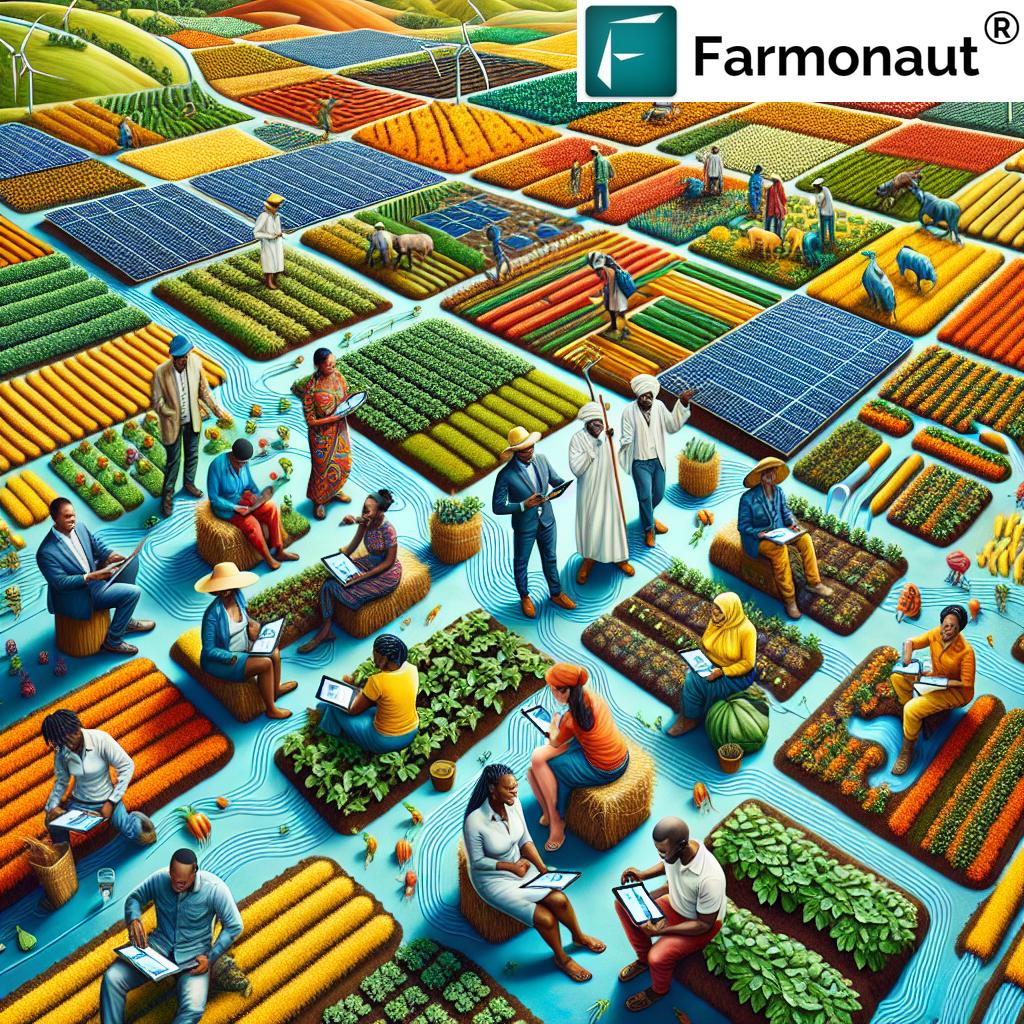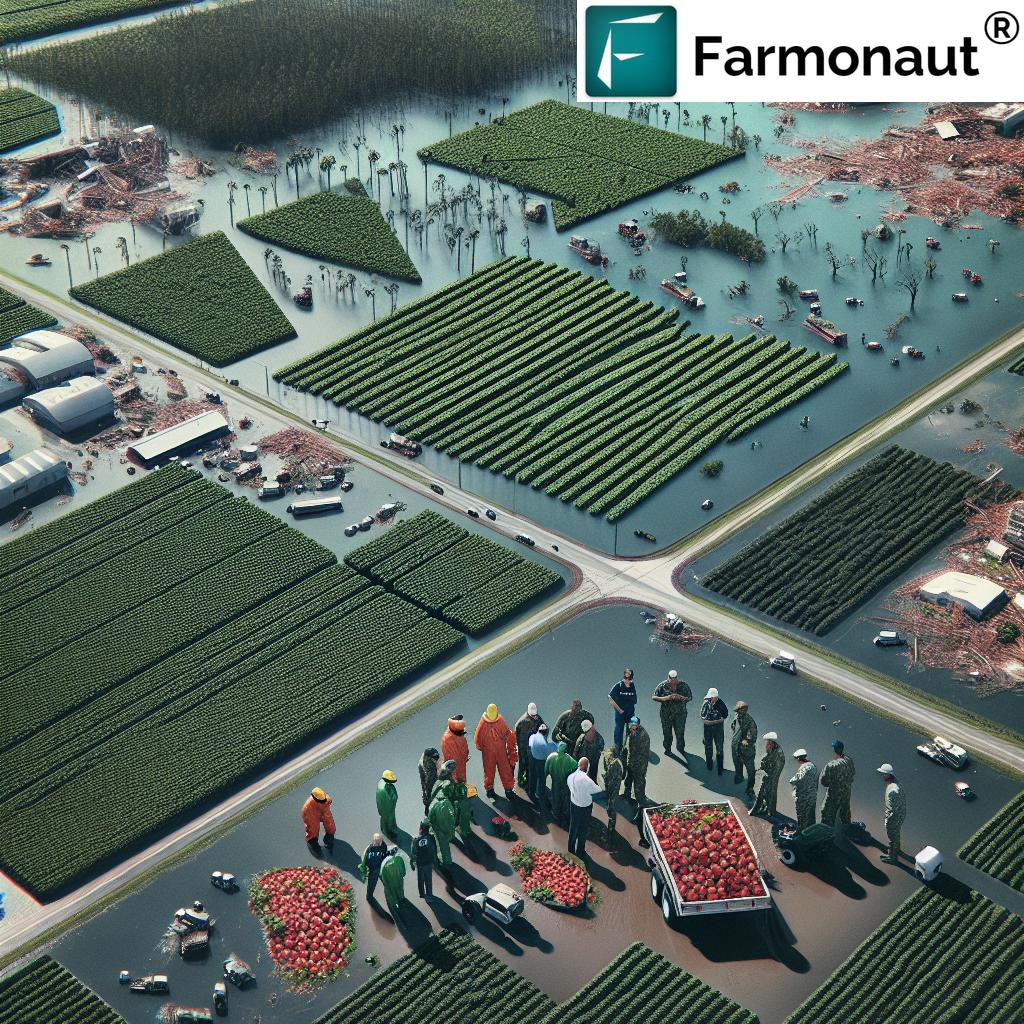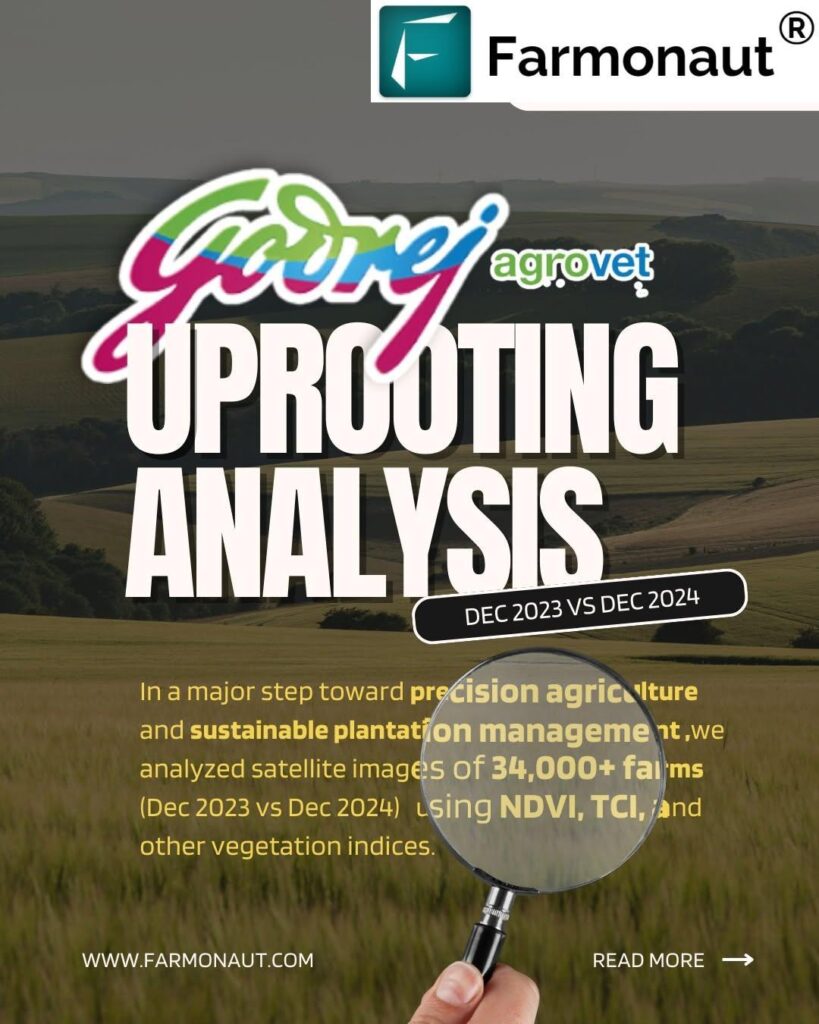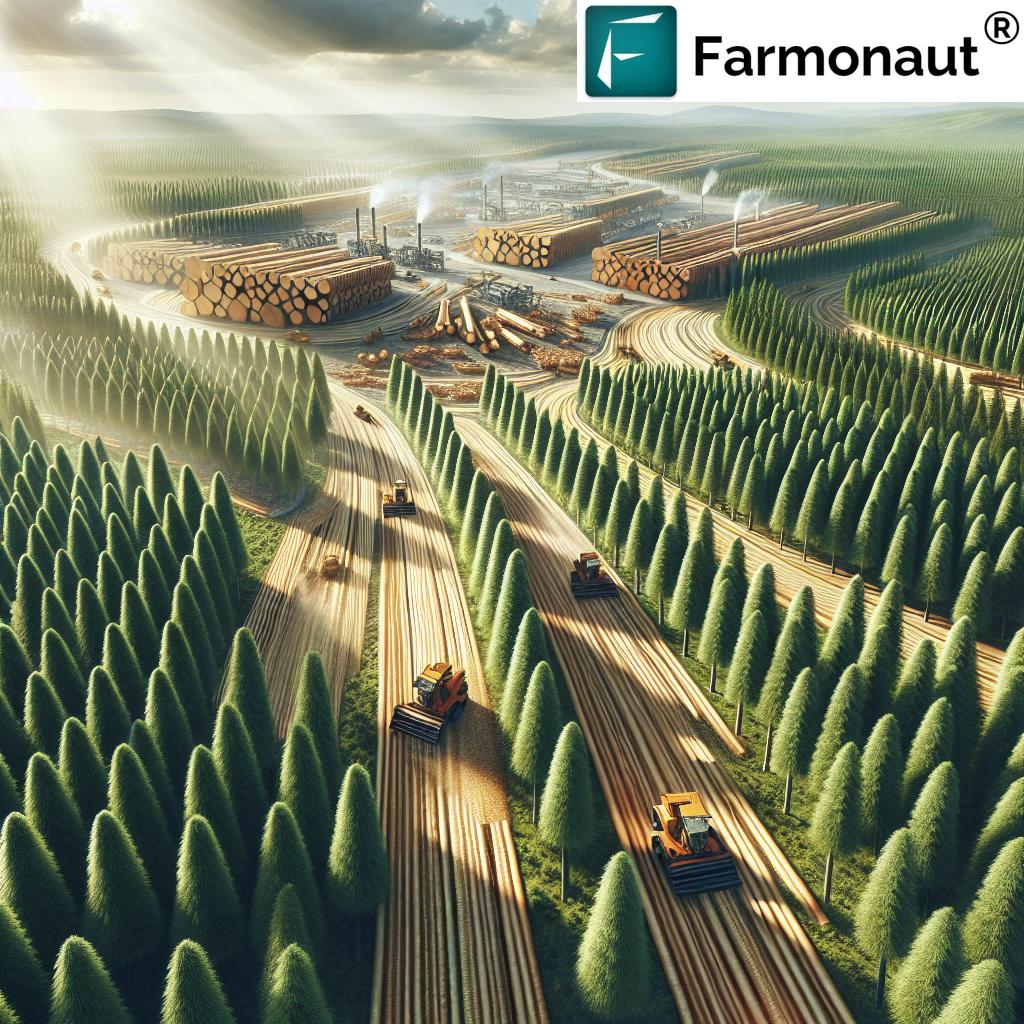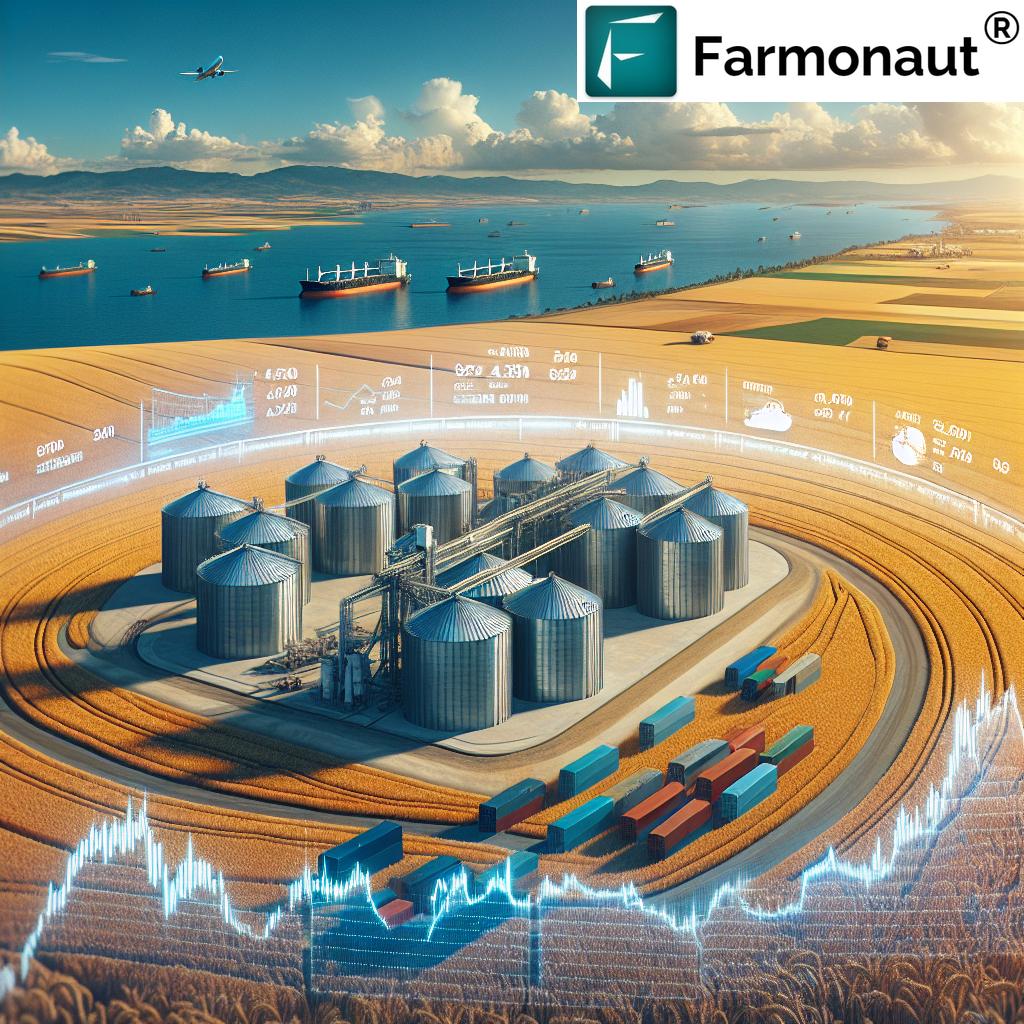Amid Climate Crisis Svalbard Global Vault Protects Seeds: Safeguarding Crop Diversity for Our Future
“The Svalbard Global Seed Vault stores over 1.2 million seed samples, preserving crop diversity from nearly every country.”
Introduction: The Crucial Role of the Svalbard Global Seed Vault
As the globe faces relentless climate change challenges—from rising temperatures to devastating droughts and floods—the significance of crop diversity preservation has never been more pronounced. Ensuring long-term food security for humanity hinges on our ability to maintain vital plant genetic resources that can adapt and thrive despite unpredictable environments and crises.
At the center of global agricultural sustainability efforts stands the Svalbard Global Seed Vault, an iconic and secure repository often called the “Doomsday Vault.” Situated in Norway’s Arctic archipelago, this unique facility is home to millions of seed samples—providing a safety net against natural disasters, political conflicts, and environmental upheaval. The vault’s mission is not only to safeguard plant diversity but also to support the development of resilient crops crucial for future generations.
In this comprehensive guide, we explore the design, strategic location, global impact, ongoing challenges, and recent developments of the Svalbard Vault, while also discussing how complementary technologies, like those from Farmonaut, reinforce our collective efforts in safeguarding plant resources and supporting agricultural sustainability.
The Global Need: Crop Diversity Preservation Amid Climate Change
Crop diversity is the result of thousands of years of agricultural evolution, selective breeding, and adaptation to various ecological niches. These varied plant genetic resources are the bedrock of our food systems, enabling the production of nutritious, resilient crops essential for feeding an ever-growing global population.
However, with the intensification of agriculture and the homogenization of commercial crop varieties, much of this diversity is at risk. Environmental crises—like the recent rise in natural disasters and shifting climate patterns—further threaten the dwindling pool of traditional seeds, prompting urgent international efforts to conserve and restore them.
- Genetic diversity conservation allows future breeders to develop crops that resist new pests or diseases.
- Seed banks worldwide act as living vaults, capturing the richness of our agricultural history so that no crucial crop is lost to time, disasters, or human conflict.
- The Svalbard facility provides a robust backup to these collections, offering a solution when local or regional gene banks face threats.
“Located in the Arctic, the vault can withstand natural and man-made disasters, ensuring food security for future generations.”
Strategic Location and Robust Design of the Arctic Seed Storage
Strategically located on Spitsbergen Island within Norway’s Svalbard archipelago, the Vault’s surroundings are anything but ordinary. Its remote arctic environment offers several natural advantages for seed preservation:
- Stable point: The vault is carved into a sandstone mountain, situated well above sea level to avoid flooding risks, giving it a strong defense against environmental disruptions.
- Natural refrigeration: The permafrost surrounding the facility acts as a constant low-temperature buffer; even if artificial power systems fail, the seeds are protected for extended periods through this natural, passive cooling wall.
- Minimal seismic activity: Its location reduces risks from earthquakes or tectonic instability that could compromise seed viability.
- Geopolitical stability: Svalbard, under Norwegian sovereignty, is governed by the Svalbard Treaty and designated as a demilitarized, neutral zone—making it a relatively safe international stronghold.
The design itself is simple yet sophisticated. The three corridors—each 120 meters deep—are embedded within permafrost and insulated with thick air locks. Modern systems monitor humidity, temperature, and security, ensuring a stable environment year-round for longevity of seeds from around the world.
How the Svalbard Facility Operates: International Seed Deposits and Collaboration
The Svalbard Global Seed Vault is the world’s ultimate backup, designed to store duplicate seed samples (“safety duplicates”) from gene banks worldwide. Its operation is founded on complex, cross-border collaboration:
- Tripartite Management: The Norwegian government, the Crop Trust (a key player in genetic diversity conservation), and the Nordic Genetic Resource Center (NordGen) jointly oversee the facility via formal agreement.
- Deposits from across the globe: As of June 2025, the Vault conserves over 1.3 million seed samples, representing more than 13,000 years of agricultural history and genetic diversity.
-
Who sends seeds? Depositors include:
- International and national gene banks and research institutions
- Governments and indigenous communities (Notable: Peru’s potato varieties, Cherokee Nation’s heirloom crops)
- Operational principle: The facility acts as a “black box.” While depositors retain ownership, the Vault simply holds and preserves the samples as a failsafe, only returning seeds upon written request when primary collections are compromised.
The Vault’s model enables international trust and transparency, serving as a testament to our shared responsibility in protecting the crops—our lifeline—against uncertainty.
Genetic Diversity Conservation: The Vault’s Crucial Role in Addressing Food Security Challenges
Seed diversity preservation is at the heart of the vault’s mission. Each seed deposit increases the genetic toolbox available to future plant breeders and researchers. Why is this so important?
- Resilience Against Threats: As climate change triggers new diseases, pests, and crop stresses, seeds from the Vault can supply traits—such as drought-tolerance or pathogen resistance—that may be missing in commercial varieties.
- Recovery After Crises: In the event of natural disasters, conflicts, or even gene bank accidents, nations can restore crucial varieties by reclaiming backup seed stock from Svalbard.
- Research and Innovation: The genetic material stored supports ongoing agricultural innovation, playing a vital role in the adaptation and improvement of staples such as wheat, rice, maize, potatoes, and thousands of lesser-known crops.
Please note: The Svalbard Vault itself does not genetically engineer or breed crops; it is uniquely focused on preserving genetic resources for safe-keeping—a process essential to all other food security activities worldwide.
Climate Change and Agriculture: Svalbard’s Impact on Crop Resilience
Climate change now manifests in more frequent droughts, floods, new pest and disease pressures, and unpredictable weather patterns. Many of our crops—developed for stable climates—are increasingly vulnerable.
The Vault’s role is, therefore, twofold:
- 1. Safeguarding plant resources against climate-induced risks: Should a catastrophic event (like the war in Syria that destroyed the ICARDA seed bank) occur, Svalbard’s stored samples become lifelines for rebuilding agricultural systems, as highlighted in the real-world example of ICARDA researchers accessing stored seeds to regenerate their collections.
- 2. Enabling crop adaptation: By protecting the full spectrum of wild and cultivated genetic diversity, the Vault supports developing new varieties that are both climate-resilient and high-yielding, vital for food security in a warming world.
Without such global seed vaults, humanity would risk losing unique traits forever, undermining our collective ability to respond to escalating climate threats and food production challenges.
Protecting Crop Genetics: A Global Effort Backed by Modern Solutions
Beyond the physical storage of seeds, it is advanced digital and satellite technologies—such as those offered by Farmonaut—that are revolutionizing how farmers, agribusinesses, and institutions monitor crop health and enhance sustainability. For example:
- Satellite-Based Crop Health Monitoring: We provide real-time, satellite-driven insights on crop vigor, soil moisture, and environmental stress—boosting early decision-making and yield resilience.
- Carbon Footprinting Solutions: Our carbon footprint tracking tool helps agricultural stakeholders reduce emissions and measure environmental impact, aligning farming with broader sustainability goals.
Combining these digital tools with physical seed bank facility backups creates a holistic approach to protecting global agriculture against climate and security crises.
Access our robust Satellite and Weather Data API—integrate real-time farm insights directly into your systems.
Check out our API developer docs for powerful integration!
For enterprises and organizations tracking environmental compliance and supply-chain transparency, our Blockchain-Based Product Traceability solutions deliver reliable proof of origin. This is invaluable in building trust and ensuring food safety and authenticity.
New Developments: Deposits & Innovations in 2024 and Beyond
The Svalbard Global Seed Vault is far from static; it continues to evolve as a living safeguard. In October 2024 alone, the Vault received over 30,000 new seed samples from 23 depositors representing 21 countries. This wave of deposits—including first-time contributions from Bangladesh, Bolivia, Chad, Nigeria, Papua New Guinea, and Suriname—illustrates ongoing global momentum for crop diversity preservation (read more here).
These newly deposited varieties reflect both staple crops and underrepresented species, further strengthening the resilience of the global food system.
-
The ongoing increase in banked seeds demonstrates:
- A deeper appreciation of genetic insurance as climate change and agriculture face mounting risks
- The important symbolism of united, international action toward agricultural sustainability
Global interest continues to rise, with more countries and communities recognizing the value in duplicating and preserving their seeds in the Arctic for generations to come (see the Reuters report).
Comparative Features Table: Svalbard and Major Global Seed Banks
| Name of Seed Bank | Location | Year Established | # Seed Samples (Est.) | Focus Crop Types | Climate Resilience Features | Notable Contributions |
|---|---|---|---|---|---|---|
| Svalbard Global Seed Vault | Spitsbergen, Svalbard, Norway (Arctic region) | 2008 | 1,300,000+ | All food crops, wild relatives | Natural permafrost, remote location, secure design | Global backup; restored ICARDA’s collection; international collaboration |
| Millennium Seed Bank | West Sussex, United Kingdom | 2000 | ~2.4 billion seeds (c. 40,000 species) | Wild plant species, especially rare/endangered | Advanced drying/vault tech; safeguarded during local disasters | World’s largest wild plant seed bank; research collaborations |
| US National Seed Storage Laboratory/Vault | Fort Collins, Colorado, USA | 1958 (now part of National Laboratory for Genetic Resources Preservation) | 600,000+ | Major global and US crops | Controlled environment, backup power, periodic viability testing | Long-term conservation of food/security crops; US germplasm safety |
Want to learn more about carbon management and tracking for sustainable farms? Explore Farmonaut’s Carbon Footprinting Solutions.
Challenges and Future Considerations for Seed Bank Facilities
Key Challenges Facing the Svalbard Seed Vault
- Not all crops store as seeds: Some vital crops—including cassava and some fruit trees—cannot be cryopreserved as seeds. Alternative conservation methods for these species are still under development.
- Biological lag (evolutionary disconnection): Seeds stored for decades may become less adapted to future environments. To counter this “biological lag,” gene banks must periodically refresh samples with new collections—both costly and logistically complex.
- Funding & support sustainability: Ongoing capital is essential to guarantee safe, long-term operations. The Crop Trust has recently appealed for more than doubling its current endowment (from $300M+) to maintain global security of seed diversity amid rising climate risks and conflicts.
- Ensuring representation: Continual outreach and inclusion of underrepresented regions and indigenous collections are vital to maintain a comprehensive, equitable seed backup.
Ensuring Facility Viability: A Shared Responsibility
The challenge is not only technical—refrigeration, physical security, management—but also deeply financial and political. Collective global action and commitment to regular deposits, data updating, and funding are the only way to ensure lasting food security for every nation.
As part of our own organizational commitment at Farmonaut, we believe supporting transparent data flows, resource optimization, and environmental tracking empowers farmers and stakeholders to play their part in agricultural sustainability efforts—complementing the foundational protection provided by the Svalbard Vault and other gene banks.
Interested in digital tools for managing large farms and plantations? Discover the benefits of our Large Scale Farm Management Solution.
How Farmonaut Empowers Sustainable Agriculture
While the Svalbard Vault provides an essential physical backup, the future of food security will increasingly rely on actionable data, advanced technologies, and real-time monitoring. That’s where we, at Farmonaut, contribute to the ecosystem with a suite of cutting-edge digital solutions for every user:
- Real-time Crop Health Monitoring: Our satellite-based platform gives farmers and institutions the power to view vegetation health, detect stress, and optimize input use remotely—reducing resource waste and boosting yields.
- Personalized AI Advisory: Jeevn, our AI-based advisory, empowers users with tailored, actionable recommendations on crop management, factoring in weather conditions and soil health.
- Blockchain Traceability: By tracking every stage of products from field to shelf, we enable full transparency for food supply chains, enhancing consumer trust.
- Fleet and Resource Optimization: Through our fleet management tools, large agricultural businesses manage vehicles and resources more efficiently, reducing fuel use and emissions.
- Access to Finance: With satellite-based verification for crop loans and insurance, we help farmers unlock much-needed financial support while minimizing fraud and risk for lenders.
When advanced digital capabilities are combined with seed preservation initiatives like Svalbard, the entire ecosystem becomes better equipped to withstand climate change and food security challenges.
Farmonaut Tools, Subscriptions & Essential Links
-
Try Farmonaut’s Satellite Platform:
web, Android, and iOS -
Discover API Solutions for developers and agtech innovators:
Farmonaut API Page |
Developer Documentation - Read More on:
FAQ: Svalbard Global Seed Vault & Seed Conservation
- What is the Svalbard Global Seed Vault’s primary mission?
- The Vault safeguards global seed diversity by storing duplicates of essential crop seeds from gene banks worldwide, ensuring humanity can restore crops lost to disasters, conflict, or genetic erosion.
- Where is the facility located and why?
- The Vault is carved into a mountain in Spitsbergen, Svalbard, Norway—in the Arctic region. Its remote, cold location (permafrost) ensures natural refrigeration and protection from both natural and human-made disasters.
- Who deposits seeds in Svalbard?
- National and international gene banks, governments, research institutions, and indigenous communities deposit seeds. Svalbard functions as a global backup for their crop genetic resources.
- What is “biological lag,” and why is it a challenge?
- Biological lag occurs when seeds in storage do not adapt to changing environments over time. Reintroducing these seeds decades later may result in crops less suited to current conditions, necessitating regular updates with fresh samples from nature.
- How does Svalbard compare to other global seed banks?
- While Svalbard is the world’s backup, other major seed banks (like the Millennium Seed Bank and the US National Vault) focus on wild plant or domestic crop species and have advanced storage and research functions. All form a vital global network for genetic diversity conservation.
- Why is continuous financial support so important?
- Maintaining seed viability and updating collections require constant funding for equipment, management, and outreach. Without stable long-term investment, the security Svalbard provides cannot be guaranteed for future generations.
- How does technology help complement the work of global seed vaults?
- Digital solutions—like Farmonaut’s satellite-based monitoring, resource tracking, and blockchain traceability—support better farm management and transparency, helping protect crop genetics by making agriculture more resilient and sustainable.
Conclusion: Ensuring a Secure & Sustainable Food Future
The Svalbard Global Seed Vault is much more than an Arctic storage facility; it is a keystone of international collaboration, global foresight, and long-term food security. As climate shifts accelerate and new agricultural challenges emerge, the Vault stands ready to preserve the foundation of our crops—giving nations and communities a vital head start in recovering from crises.
Yet, preserving global seed diversity demands ongoing commitment—in funding, policy, technological innovation, and outreach. At Farmonaut, we remain dedicated to empowering agriculture through precision monitoring, AI-driven advisories, blockchain-based traceability, and environmental stewardship. Together, by integrating robust digital solutions with physical genetic resource conservation, we can safeguard our plant genetic resources and ensure a resilient, sustainable food system for generations to come.








